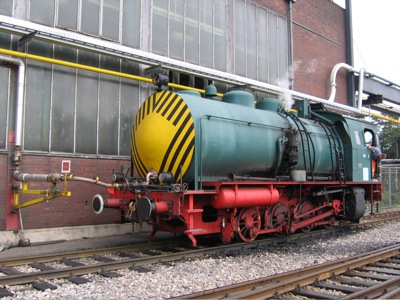Sorry, for my delay

Maybe I can help you.
The problem on fireless locomotive isn't the pressure at all, because with steam cars it depends on the boiler mounted to the car, which pressure and temperature the delivered steam has.
So I have seen steam cars with boilers delievering superheated steam of 750° F and 290 psi.... But the problem is the volume!
Fireless locoes have, like a thermos jug, onle a reservior. A large insulated drum, which has to be filled.
If you have a power plant, you plug simply the 290 psi steam bus to your thermos jug, and wait until the boiler is filled. And filled is the right word.

Look, here it is done! Notice the coupling to the 290 psi bus of the power plant.
So by now: This bus deliveres no steam, it is water under 290 psi pressure, thus being very hot water, which will, emerged to athmosphere quickly evaporate into steam. Same will happen in the drum of you fireless locomotive, but quickly the volume is need up, and now pressure forms, and as steam would not more accumulate, the pressure rises and quickly you get below the point of having free steam, now only water will flow into the drum and fill it up to approximately two-thirds or three-quarters of drum volume.
So in the cab you have a large water gauge mounted, which shows the level in the drum, as this is your boiler reserve, and a pressure meter, which shows, how hot the water is...
If you have one-third filled, and a pressure of less than 30 psi, it's time for a complete recylce.
So move that engine to the filling station. Now mount the discharge tube to the connector valve, and open the valve. All remaining water will be pushed out by the remaining pressure in the drum, usually as hot jet of water....
After the drum is empty, unbolt the tube, put it back to the mount and get the connector to the steam bus, open the valve again and refill your thermos jug with fresh and plain 290 psi steam / hot water from the bus system.
But consider: For a complete filling you will need 5000 gallons of water with 290 psi... that often much beyond the capacitivy a steam car maybe able to deliver....
That's why a steam car would be a problem... not because of being unable to deliever the steam or the pressure, more because the unability to deliever the amount of steam / water-under-pressure in time in the right amount.
So you need a large boiler to fill your "Thermos jug"....
Allways keep two-thrid level in gauge and a well set fire, that's how the engineer likes a fireman
